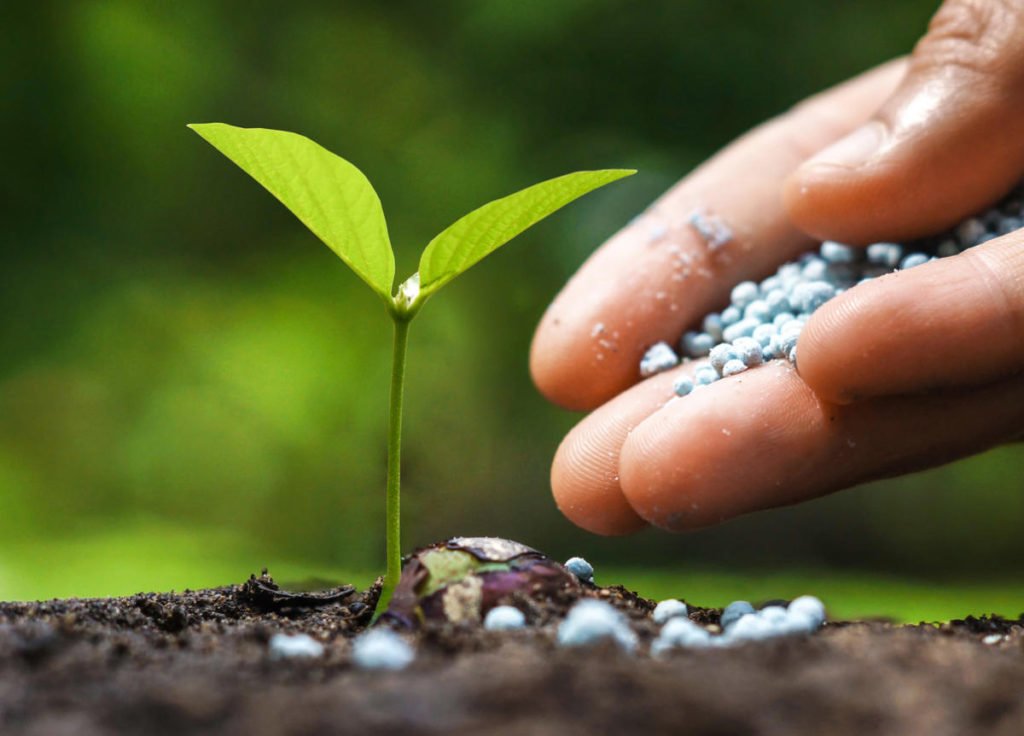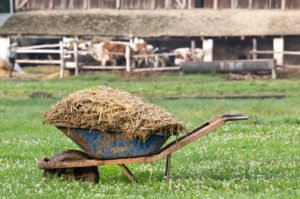You have a beautiful well-maintained cottage. And then one day you suddenly notice with horror that some of your green pets begin to wither — their leaves acquire an unnatural blue-purple color, and the harvest leaves much to be desired… These signs indicate that they are experiencing a significant shortage of phosphorus. Urgently run to the nearest store for an ambulance – phosphorus fertilizers.
A little about phosphorus
All types of phosphorus fertilizers are obtained from natural minerals formed during the mineralization of animal skeletons, as well as from slag (which is formed during the processing of iron ores). In nature, phosphorus is practically not found in free form, but it is part of many organic substances and minerals in the form of oxide.
Absolutely all plants need phosphorus. Although its natural content in the soil is no more than 1%, and phosphorus compounds that are easily accessible to plants are even less, phosphorus is vital for plant nutrition. Especially for seedlings, since phosphorus provides energy processes in the cellular system of plants. And to get it in a different way than from our caring hands, suburban plants simply do not know how.
What is superphosphate?
Now there are a variety of phosphorus fertilizers on sale, the first place among which is rightfully occupied by superphosphate.

Superphosphate is a mineral phosphorus fertilizer, which also contains many trace elements useful for plants: sulfur, magnesium, calcium and others. Superphosphate acts on plants in several ways: improves metabolism, increases yield and improves crop quality, improves the development of the root system, accelerates the development and flowering of plants. In addition, phosphorus fertilizer saves our plants from many different diseases.
Types of superphosphate
There are several types: simple, double, powdered, granular. What to choose? Let’s try to figure it out.
Simple superphosphate
Simple superphosphate is a non-concentrated water-soluble phosphorus (16-20%) fertilizer containing sulfur (8-10%), magnesium (0.5%) and calcium (8-12%). It is available in powder form and in the form of granules. Simple superphosphate is suitable for use on all types of soils; promotes excellent growth of plants that consume a lot of sulfur: legumes, cereals, cruciferous. Top Dressing with simple superphosphate is well perceived by potatoes, beets, turnips, radishes, carrots, flax, bulbs and so on.
Methods of application:
- it is desirable to make the main part in autumn (spring), deeply cultivate the soil (April, September);
- when sowing or planting (preferably granular) – in holes, grooves, pits;
- as feedings (June, July, August).
Double superphosphate
Double superphosphate is a concentrated water-soluble phosphorus fertilizer. It contains 43-46% phosphorus in an easily digestible form for plants. The composition contains (in small quantities): calcium sulfate, aluminum and iron phosphates and others. Like a simple superphosphate, it is suitable for all types of soils and all plants.
Methods of application:
It looks like a simple superphosphate. They are applied during digging in autumn or early spring so that phosphorus has time to assimilate in the soil. In addition, it is recommended to water plants that lack phosphorus with an aqueous solution of double superphosphate 1-2 times per season.
Dosage of superphosphate
The dosage of superphosphate depends not only on the type of plant, but also on the quality of the soil. For example, for vegetables and greens, it is recommended to apply from 30 to 40 g (1-1.4 oz) of double superphosphate per 1 m2 of soil. Simple, respectively, is made twice as much. If the soil is poor, the dosage of fertilizers should be increased by 20-30%. Under fruit trees, 500-600 g (17.6-21.1 oz) of double superphosphate is usually applied in autumn, for greenhouses – 90-100 g (3.2-3.5 oz), and when planting potatoes – 3-4 g (0.1-0.14 oz) in the hole.
Superphosphate cannot be buried together with the soil, but simply evenly distributed over the landing site, strictly observing the dosage (indicated on the package).
Application of superphosphate
Superphosphate is suitable for use on all types of soils and for all crops. But on acidic soils it is difficult for plants, so it should be deoxidized with lime or ash: add 200 g (7 oz) of ash or 0.5 kg (1.1 lb) of lime per 1 m2. Remember that superphosphate can be introduced into the soil no earlier than a month after deoxidation, otherwise it will lose most of its useful properties.

Superphosphate is introduced into the soil before sowing plants during digging, it is poured directly into the wells (rows) immediately before planting, used as a top dressing. The proportions for different garden crops are shown on the packaging.
When working with superphosphate, remember a simple axiom: never mix it with carbamide, lime, ammonium nitrate and chalk.







is this good for wisteria